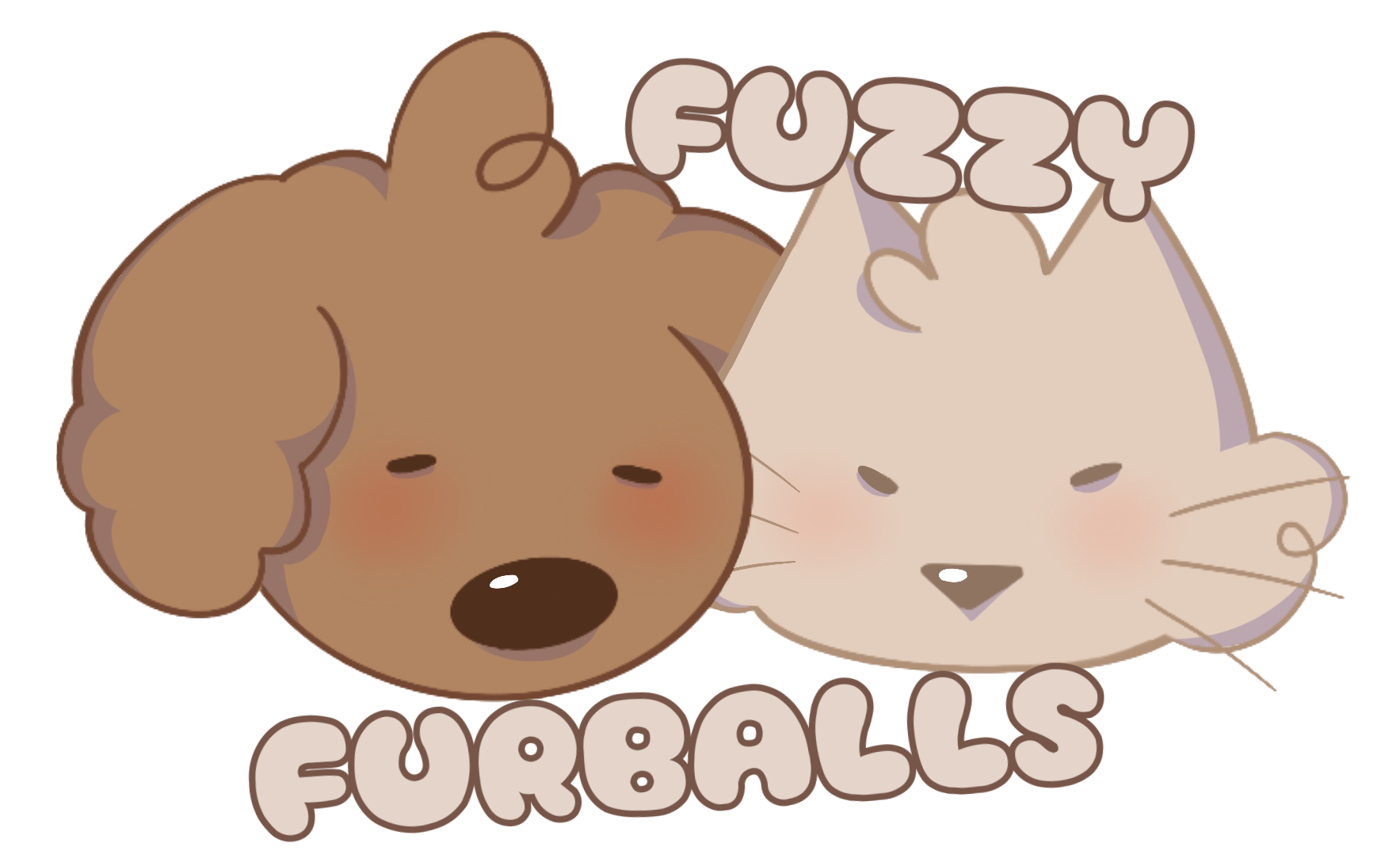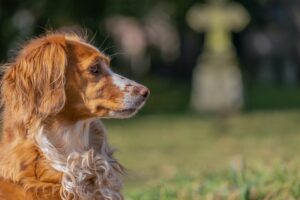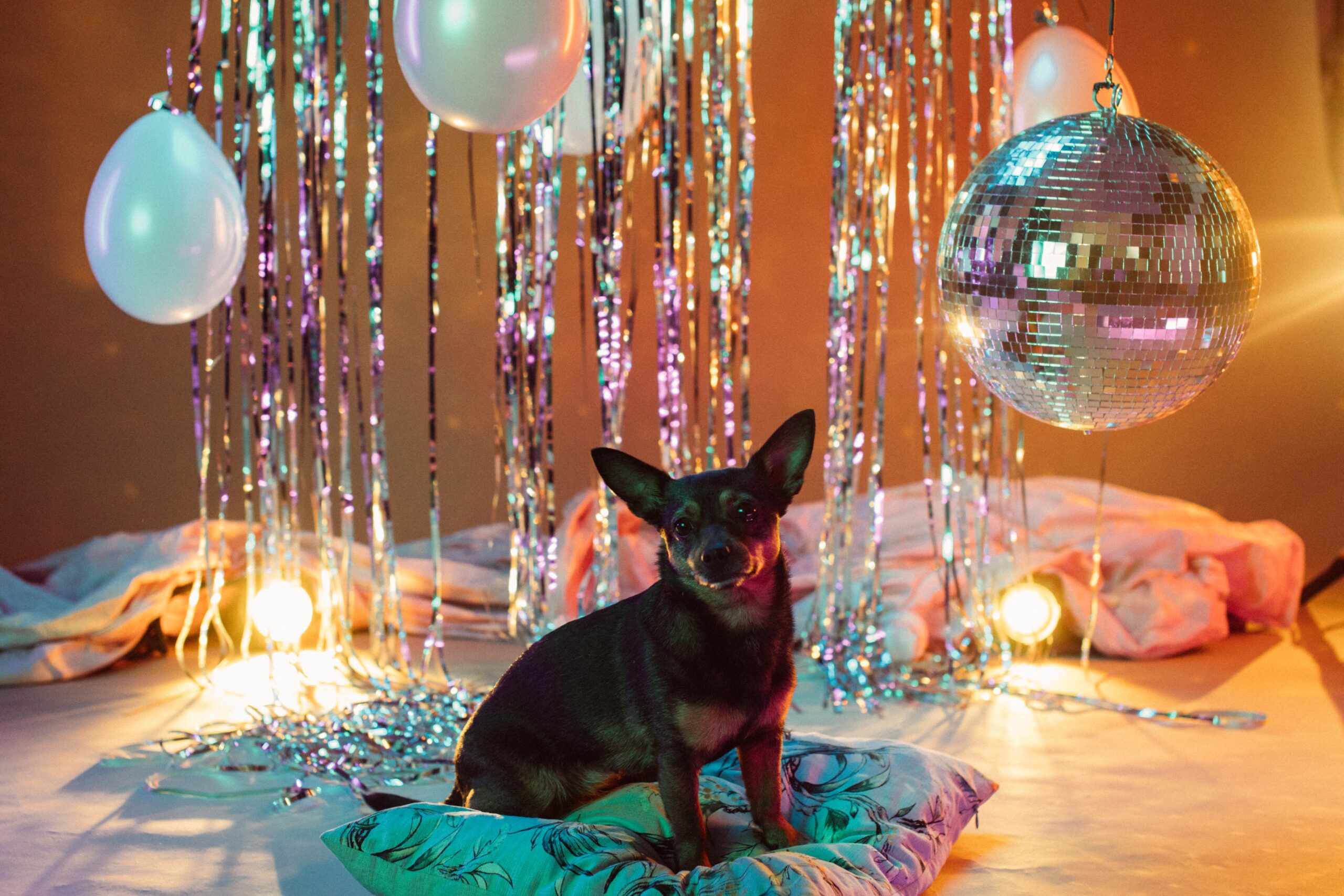Balloon phobia in dogs refers to an intense and irrational fear of balloons or anything related to them. Dogs affected by this phobia exhibit heightened anxiety, stress, and fear when exposed to balloons or situations involving them. But why are dogs afraid of balloons? The fear response can be triggered by various aspects of balloons, including their size, shape, sound, and unexpected movements. The fear is often disproportionate to the actual threat posed by the balloons, and it can significantly impact a dog’s behavior and overall well-being.
The prevalence of balloon phobia in dogs varies among individual animals, but it is not an uncommon issue. Many dogs display mild to severe fear responses when they encounter balloons, whether inflated or deflated. Common manifestations of balloon fear include trembling, panting, drooling, excessive barking or whining, hiding, cowering, and attempts to escape from the situation. In extreme cases, dogs may exhibit aggressive behavior as a defensive reaction to what they perceive as a threat.
Understanding and addressing balloon phobia is of utmost importance for dog owners for several reasons. Firstly, persistent fear and anxiety can negatively impact a dog’s overall quality of life, leading to chronic stress and emotional distress. Secondly, unmanaged phobias can result in behavioral problems and may strain the bond between the dog and its owner. A fearful dog may become reluctant to engage in regular activities or even avoid spending time with its family.
Furthermore, unaddressed fear can lead to safety concerns. A dog experiencing extreme anxiety around balloons may inadvertently put itself in dangerous situations while attempting to flee or hide from perceived threats. This poses risks to the dog’s physical well-being and increases the likelihood of accidents or injuries.
Moreover, when dog owners understand the root causes and triggers of their pet’s fear, they can take appropriate steps to help their furry companions overcome their phobia. This may involve implementing gradual desensitization techniques, positive reinforcement training, or seeking professional assistance from dog behaviorists or trainers.
The Nature of Dogs and Fear
Evolutionary Perspective on Canine Fear Responses
To understand why dogs develop phobias, including the fear of balloons, we must examine their evolutionary history. Dogs, as descendants of wolves, have inherited certain survival instincts that served their ancestors well in the wild. Fear is an adaptive response that helped wolves and early dogs to identify potential threats in their environment and avoid dangerous situations.
While domestication has brought about significant changes in dogs’ behavior and temperament, their innate fear response remains intact. Dogs can quickly pick up on cues from their surroundings and interpret them as either safe or potentially hazardous. In the case of balloons, certain characteristics such as their size, shape, and sudden movements may trigger the ancient survival instincts in dogs, causing them to perceive balloons as something potentially threatening.
Understanding the Role of Fear in Survival and Self-Preservation
Fear is a fundamental emotion that plays a crucial role in a dog’s ability to survive and preserve itself. When dogs encounter new or unfamiliar stimuli, their fear response prompts them to approach the situation cautiously. In nature, this instinct allowed wolves and early dogs to avoid predators, hostile environments, or potential dangers like large animals.
In a domestic setting, dogs continue to rely on this survival mechanism. While balloons themselves are not inherently dangerous, their unpredictable movements or sudden popping sounds can trigger a fear response in dogs. These reactions can be particularly pronounced in dogs with a predisposition to anxiety or those with limited exposure to various stimuli during their critical socialization period.
How Dogs’ Senses Contribute to Their Sensitivity to Balloons
Dogs possess heightened senses that contribute to their sensitivity to balloons and other stimuli. Their acute hearing allows them to detect subtle sounds that may be inaudible to humans. When a balloon pops or makes a sudden noise, it can be particularly startling for dogs, leading to fear and anxiety.
Additionally, dogs have a well-developed sense of smell. Balloons often carry unfamiliar scents, especially when inflated with helium or filled with different gases. These unusual smells can further contribute to a dog’s unease and fear of balloons, as the scent represents an unfamiliar and potentially threatening element in their environment.
Furthermore, a dog’s visual perception plays a role in their sensitivity to balloons. Balloons are large, colorful objects that stand out in a dog’s visual field. When combined with their other senses, such as hearing and smell, the appearance of balloons can create a sensory overload for dogs, leading to heightened anxiety and fear responses.
Understanding how dogs’ evolved senses influence their perception of balloons is crucial for dog owners seeking to help their pets overcome their phobia. By considering the evolutionary context and the sensory experience of dogs, we can develop effective strategies to desensitize and support them through their fear of balloons.
Causes of Balloon Phobia in Dogs
Loud Noises and Unexpected Movements: Startling Effects
One of the primary causes of balloon phobia in dogs is the startling effect of loud noises and unexpected movements associated with balloons. When a balloon pops or releases air suddenly, the loud noise can trigger a fear response in dogs. Their acute sense of hearing makes them more susceptible to being startled by such noises, leading to heightened anxiety and fear.
In addition, the unpredictable movements of balloons, especially if they are floating or swaying, can be disconcerting for dogs. The lack of control over the object’s motion can create a sense of unpredictability and instability, contributing to the fear response.
Inflated Balloon’s Size and Shape: Threat Perception
From a dog’s perspective, an inflated balloon can appear unusually large and take on irregular shapes. Dogs may interpret the inflated balloon as a potential threat due to its size and unconventional appearance. As a result, they may perceive balloons as imposing objects that could potentially harm them.
Moreover, the physical properties of balloons can be confusing for dogs. The smooth surface, lightweight nature, and ability to move without apparent cause can create a perception of the balloon being an animate and potentially dangerous entity, further intensifying their fear.
Unfamiliar Scents Associated with Balloons: Anxiety Triggers
Dogs rely heavily on their sense of smell to understand and interpret their environment. Balloons, particularly those filled with helium or other gases, emit unfamiliar scents that dogs may find distressing or alarming. The unusual odor can be a significant anxiety trigger for dogs, as it represents an unfamiliar and potentially hazardous element in their surroundings.
Furthermore, if the balloons are used in settings where other stress-inducing scents are present (e.g., parties, events with many people), the combination of odors can heighten the dog’s anxiety, leading to a more intense fear response.
Negative Past Experiences: Trauma and Learned Fear
Negative past experiences can be a significant factor in the development of balloon phobia in dogs. If a dog has been exposed to a traumatic event involving balloons, such as a balloon popping loudly or unexpectedly, it can leave a lasting impact on their psyche. The dog may associate balloons with fear and danger, leading to a learned fear response.
Additionally, early exposure to balloons and how those experiences are handled can influence a dog’s perception of balloons later in life. If a young puppy is not adequately socialized to balloons and is not introduced to them in a positive and gradual manner, it may result in the development of a phobia as the dog matures.
Understanding these potential causes of balloon phobia in dogs is essential for dog owners seeking to help their pets overcome their fear. By identifying the specific triggers and addressing them through appropriate desensitization techniques and positive reinforcement, dog owners can provide a supportive environment to assist their furry companions in managing and overcoming their fear of balloons.
Signs and Symptoms of Balloon Fear in Dogs
Physical Signs: Trembling, Panting, Drooling, etc.
When a dog is experiencing fear or anxiety related to balloons, it can manifest through various physical signs. Some of the common physical indicators of balloon fear in dogs include:
- Trembling: Dogs may visibly shake or shiver as a response to their heightened anxiety. This trembling is often more pronounced in severe cases of fear.
- Panting: Increased and rapid panting is a typical sign of stress in dogs. It helps them regulate body temperature and is often seen when dogs are anxious or afraid.
- Drooling: Excessive drooling is another physical manifestation of fear and anxiety in dogs. It is a natural response to stress and helps to lubricate the mouth.
- Pacing: Dogs may pace back and forth when exposed to balloons, unable to settle due to their heightened state of agitation.
- Increased Heart Rate: Fearful dogs may have an elevated heart rate, which can be detected by feeling their chest or listening for an irregular heartbeat.
- Loss of Appetite: Fear and anxiety can lead to a decreased interest in food, causing dogs to refuse meals or treats.
Behavioral Signs: Hiding, Running Away, Aggression
Balloon fear in dogs can also be observed through their behavioral responses to the presence of balloons. These behavioral signs may include:
- Hiding: Fearful dogs often seek hiding spots to escape the source of their fear. They may retreat to a secluded area or behind furniture to feel more secure.
- Running Away: Some dogs may attempt to flee from the situation altogether, trying to distance themselves from the perceived threat of balloons.
- Aggression: In severe cases of fear, dogs may display aggressive behavior as a defensive mechanism. They might growl, bark, or even snap at the balloons or people nearby.
- Destructive Behavior: Dogs with balloon phobia may engage in destructive behaviors, such as chewing on furniture or household items, as a way to cope with their anxiety.
- Excessive Vocalization: Fearful dogs may bark or whine excessively when exposed to balloons, expressing their discomfort and distress.
Emotional Signs: Signs of Stress and Distress
Emotional signs of balloon fear in dogs are more subtle but equally important to recognize. These signs indicate that the dog is experiencing stress and emotional distress, which can affect their overall well-being. Emotional signs may include:
- Wide Eyes: Dogs may have dilated pupils and wide-eyed expressions when feeling fearful or anxious.
- Ears Back: Fearful dogs often pin their ears back against their heads as a submissive or protective response.
- Tail Tucked: A tucked tail is a sign of fear and submission in dogs, indicating their unease.
- Excessive Licking or Yawning: Dogs may lick their lips or yawn repeatedly when feeling stressed, as these are calming behaviors for them.
- Avoidance: Dogs may actively avoid the area or people associated with balloons to minimize their anxiety.
Recognizing these signs and symptoms of balloon fear in dogs is crucial for understanding their emotional state and providing appropriate support and intervention. By acknowledging and addressing their fear, dog owners can help their pets cope with balloon phobia and create a safe and comforting environment for them.
Prevention Strategies
Early Socialization: Introducing Balloons and Other Stimuli
Early socialization is a vital aspect of preventing balloon phobia in dogs. By exposing puppies to a wide range of stimuli, including balloons, during their critical socialization period (typically between 3 and 16 weeks of age), owners can help them develop positive associations with various objects and situations.
During socialization, it is essential to introduce balloons gradually and in a controlled manner. Start with deflated balloons and gradually progress to inflated ones. Allow the puppy to approach the balloons at their own pace, providing reassurance and positive reinforcement for calm and curious behavior. The goal is to create positive early experiences with balloons, so the puppy learns that they are not a threat.
Creating Positive Associations: Play and Reward-Based Interactions
Positive reinforcement is a powerful tool in preventing and managing balloon phobia. When a dog is exposed to balloons, offer treats, praise, or favorite toys as rewards for calm and relaxed behavior. This creates a positive association with balloons, reinforcing the idea that balloons are not dangerous or fear-inducing.
Engaging in play with balloons can also be beneficial. Interactive play sessions involving balloons, where the dog can chase, paw, or interact with them in a fun and non-threatening manner, can help reduce their fear and build confidence.
Managing Environments: Reducing Exposure to Fear-Inducing Situations
It is crucial to be mindful of the dog’s environment and avoid exposing them to situations that may trigger their fear of balloons. For example, if you know that your dog is scared of balloons, consider avoiding parties or events where balloons are likely to be present. Creating a safe and controlled environment for the dog minimizes their exposure to potential triggers, reducing the likelihood of developing phobias.
When unavoidable situations arise, ensure that the dog has a designated safe space, such as a crate or a quiet room, where they can retreat to feel secure. This gives the dog a sense of control over their environment and helps them manage their anxiety more effectively.
Professional Guidance: Consulting a Dog Behaviorist or Trainer
If a dog already shows signs of balloon phobia or if prevention strategies are not effective, seeking professional help from a qualified dog behaviorist or trainer is recommended. These professionals can assess the dog’s fear responses, develop a tailored behavior modification plan, and guide the owner in implementing desensitization and counterconditioning techniques.
Professional guidance is particularly crucial in cases of severe fear or anxiety, as specialized training and behavioral interventions may be necessary to help the dog overcome their phobia effectively.
By implementing these prevention strategies, dog owners can take proactive measures to help their pets develop a positive outlook on balloons and various stimuli, fostering a confident and well-adjusted canine companion. Early socialization, positive associations, and a supportive environment play a key role in preventing and managing balloon phobia, ensuring a happier and healthier life for dogs.
When to Seek Veterinary Assistance
Differentiating Between Fear and Anxiety Disorders
While some level of fear in response to certain stimuli is normal for dogs, it is essential to differentiate between typical fear and anxiety disorders. Fear is a natural emotion that arises in response to perceived threats, while anxiety disorders involve persistent and excessive fear or worry that significantly impairs a dog’s daily life.
If a dog’s fear of balloons is causing severe distress, interfering with their ability to function normally, or negatively impacting their overall well-being, it may indicate an anxiety disorder. Signs of an anxiety disorder can include chronic fear, avoidance of normal activities, and excessive reactions to balloon-related stimuli.
Possible Underlying Medical Causes for Fear Reactions
In some cases, fear reactions in dogs may have underlying medical causes. Certain health issues, such as pain, sensory impairments, or neurological disorders, can exacerbate fear responses and make dogs more sensitive to stimuli like balloons.
Before assuming the fear is solely behavioral, it is crucial to rule out any medical conditions that could be contributing to the dog’s fear or anxiety. If there are any concerns about the dog’s health, it is best to consult a veterinarian to conduct a thorough physical examination and address any medical issues that may be influencing the dog’s behavior.
Medication and Behavior Modification in Extreme Cases
In extreme cases of balloon phobia, where prevention strategies and behavior modification techniques have not been effective, veterinary assistance may be necessary. A veterinarian or veterinary behaviorist can assess the severity of the fear and recommend appropriate treatment options.
In some situations, medication may be prescribed to help manage the dog’s anxiety and reduce fear-related behaviors. Anti-anxiety medications or sedatives can be used on a short-term basis to help the dog cope with specific situations, such as events where balloons are present.
Behavior modification plans tailored to the individual dog’s needs may also be implemented. This may involve desensitization and counterconditioning techniques carried out under professional guidance to gradually help the dog develop a more positive association with balloons.
Additionally, veterinarians can collaborate with dog behaviorists or trainers to provide a comprehensive approach to address the dog’s phobia effectively. Regular monitoring and adjustments to the treatment plan may be necessary to ensure progress and improve the dog’s overall quality of life.
Conclusion
Recognizing the signs of severe fear or anxiety related to balloons in dogs is vital for ensuring their well-being and happiness. If preventive measures and behavior modification techniques are not sufficient, seeking veterinary assistance is essential to rule out any medical causes and explore appropriate treatment options. With patience, understanding, and professional support, dog owners can help their furry companions overcome their fear of balloons and lead a more comfortable and fear-free life.
Real-life Success Stories
Case Studies of Dogs Overcoming Their Fear of Balloons
There are numerous heartwarming case studies of dogs successfully overcoming their fear of balloons through dedicated training and support. Let’s take a look at a couple of real-life success stories:
Case Study 1: Max Max, a 4-year-old Labrador Retriever, developed an intense fear of balloons after a traumatic experience during a party where a balloon popped loudly. His fear escalated to the point where he would hide under furniture and tremble whenever he saw balloons.
With the help of a certified dog behaviorist, Max’s owner implemented a gradual desensitization program. They started by introducing deflated balloons in a controlled environment, rewarding Max with treats and praise for calm behavior. Over several weeks, they gradually inflated balloons while providing positive reinforcement. Max’s fear diminished, and he learned that balloons were not as threatening as he initially perceived.
Case Study 2: Bella Bella, a 2-year-old Shih Tzu, developed a fear of balloons due to their unfamiliar shapes and loud popping sounds. Her fear became evident during outdoor events, where she would become agitated and try to run away when balloons were present.
Bella’s owner, with the guidance of a dog trainer, worked on creating positive associations with balloons. They engaged in playful interactions with balloons, using gentle movements and rewarding Bella for engaging in the activities. Slowly, Bella’s fear diminished, and she became more comfortable in the presence of balloons.
Testimonials from Dog Owners About Their Experiences
Testimonial 1: “We were heartbroken to see our beloved Charlie terrified of balloons. Thanks to a trainer’s advice, we started incorporating balloons in his playtime with treats, and it was remarkable to witness his progress. He now even joins us during birthday parties without any signs of fear. We’re grateful for the positive changes!” – Sarah and John, owners of Charlie, a Golden Retriever.
Testimonial 2: “When we adopted Daisy, she was anxious around any unfamiliar objects, especially balloons. With professional help, we gradually introduced balloons into her life and saw a transformation. She went from hiding under the bed to curiously exploring balloons. Now, she even nudges them playfully! It’s been an incredible journey.” – Emily, owner of Daisy, a mixed breed rescue.
These real-life success stories demonstrate the power of patient training, positive reinforcement, and professional guidance in helping dogs overcome their fear of balloons. With love, understanding, and commitment from their owners, fearful dogs can learn to face their fears and embrace a more joyful and confident life.
Why are Dogs Afraid of Balloons?
Dogs’ fear of balloons can be attributed to several factors, including the startling effects of loud noises and unexpected movements, the perception of balloons as imposing objects due to their size and shape, anxiety triggers from unfamiliar scents, and negative past experiences leading to learned fear. Dogs’ heightened senses play a significant role in their sensitivity to balloons, making them more prone to fear responses.
Empathy and patience are essential when dealing with dogs experiencing balloon phobia or any fear-related issues. Fear is a natural emotion for dogs, and understanding their perspective is crucial for providing appropriate support. Rushing the process or forcing a dog to confront their fears can worsen their anxiety. Instead, gradual desensitization, positive reinforcement, and creating positive associations are key to helping dogs overcome their fear of balloons in a gentle and compassionate manner.
Unaddressed phobias can have a detrimental impact on a dog’s overall well-being and happiness. Fearful dogs may experience chronic stress, leading to physical and emotional health issues. Their quality of life can be compromised as they avoid certain situations, limiting their ability to enjoy regular activities and engage in social interactions. By recognizing and addressing balloon phobia, dog owners can improve their pets’ emotional health, strengthen the bond between dog and owner, and provide them with a happier and more fulfilling life.
In conclusion, balloon phobia in dogs is a genuine concern that requires attention and understanding. Through early socialization, positive reinforcement, and controlled exposure to balloons, dogs can learn to cope with their fear and develop positive associations with these objects. Professional guidance may be necessary in severe cases, where medication and behavior modification can be considered. By fostering an environment of empathy, patience, and support, dog owners can help their furry companions overcome their fear of balloons, paving the way for a more confident, happy, and well-adjusted dog.










